What Can We Do to Make Onboarding Training Stick?
Last Updated on August 31, 2024 / Training & Development

HR Question:
We’ve seen our new hires struggling to remember what they’ve learned in their first few days with our company. What can we do to get our onboarding training to stick?
HR Answer:
The first few days at any job can be overwhelming and chock-full of critical information for new hires. It’s no surprise that sometimes lessons learned in onboarding training don’t stick as well as managers and team members may wish they did. Sometimes it’s a matter of the amount of information to be learned, the ability of the new hire, the onboarding training itself, or a combination of all three.
One feature employers can control is the efficacy of the onboarding training. In a survey by Gallup, only 12% of employees felt that their organization’s onboarding program was “adequate or successful.” Ineffective onboarding training can leave employees feeling confused and unsure about their role, where they fit in, and what they must do to perform the job satisfactorily. This lack of certainty and confidence may be all that it takes for an employee to want to go somewhere else where they will feel more comfortable.
But when new hire orientations are successful, we see a positive jump in retention. New employees who went through a successful structured onboarding program were 58% more likely to be with the organization after three years. For those who may be struggling with ineffective or unmemorable onboarding programs, revamping your new employee onboarding program can help you to move the needle on better employee retention.
So what can employers do to breathe life into fading onboarding programs?
Shake Up Your Onboarding Delivery Methods
Use a mix of delivery methods for your training – also known as multi-modal learning. While adults often have a preferred way to learn (that is, reading, listening, or hands-on doing), they generally absorb more when they are given a mix of these learning methods.
Spend no more than 15 to 20 minutes doing lecture-type delivery before getting them into an activity to apply what they have learned. Get learners into discussion groups, show a video, give them a quiz, or take them on a brief tour of their workplace. Then do a bit more lecture followed by activity. Rinse and repeat. This varied method also lends itself well to virtual or remote onboarding, as it reduces the amount of time employees stare at someone droning through a screen.
Spread Out Your Onboarding Training
It’s important to recognize and accommodate the shorter attention spans of today’s learners. Change lecture-intensive, lengthy onboarding sessions spread over long hours to shorter, intermittent sessions. On their first day, after completing their new-hire paperwork, train new hires in short bursts on what they must do or know for their first day on the job, such as where they will work, where to take their breaks, safety must-do training, introductions with their boss and fellow team members, and how to get them started on doing their job.
The next day, provide them with small bites of more training (for example, benefits enrollment and additional job/skill training) and then let them return to their job. In sessions later in the week or the following week, discuss the company’s mission, vision, and values.
This intermittent training that is based on a learn-apply-review, learn-apply-review approach will help your employees retain more of what they are being taught.
Provide On-Demand Onboarding Materials
Make sure to give new hires a means to review what they may have missed or forgotten during their onboarding training. Provide them with links to access online information sources or recorded training. Give them a QR code to scan into their phones that will take them to information sources between onboarding sessions and beyond.
Make Onboarding Challenging and Fun
Onboarding training that is challenging and fun will be far more memorable and enjoyable. Introduce elements of “gamification” – contests, scavenger hunts, trivia quizzes – all focused on important information that new hires must learn and remember from their onboarding training. If possible, build the challenges around teams working together rather than individually so that they begin to build relationships with co-workers.
Thank you to Terry Wilson, Training Practice Manager, for contributing to this edition of our HR Question of the Week.
Onboarding is a crucial element of engaging and retaining your employees. It’s often overlooked but can make or break your relationship with that new hire. Do you have a strong onboarding process in place? Clark Schaefer Strategic HR has experience developing orientation programs that can help you provide the best first experience for your new employees. Visit our Training and Development page or contact us to learn how we can assist you with your onboarding and other types of training and development.



